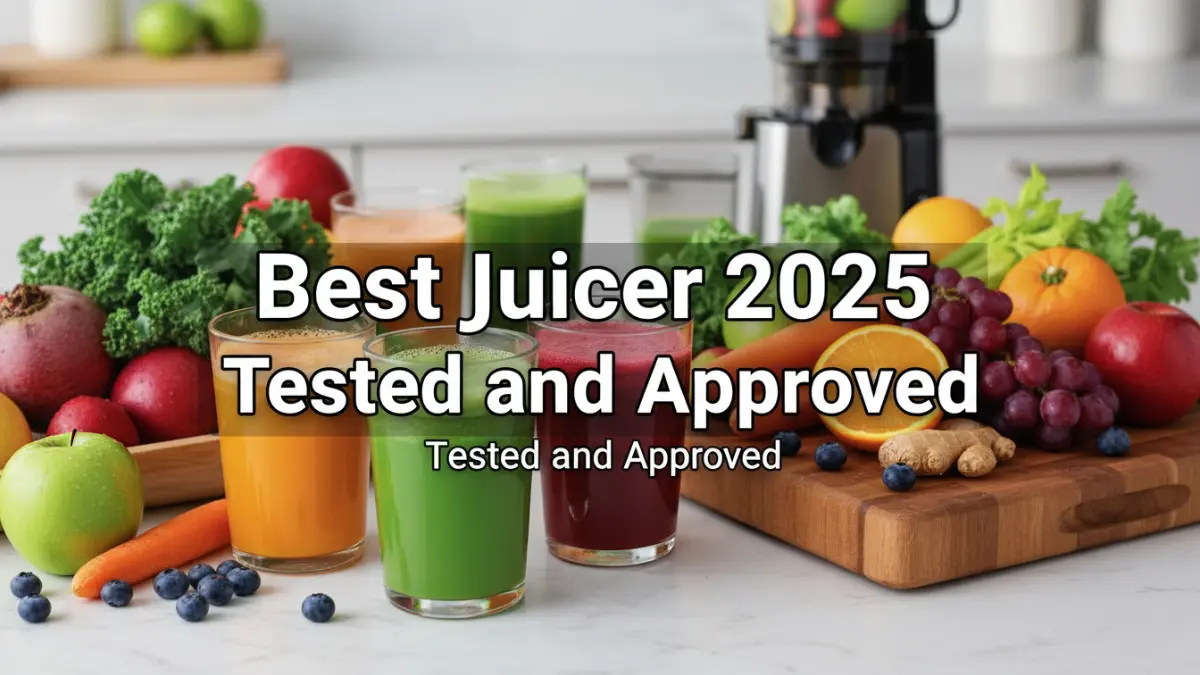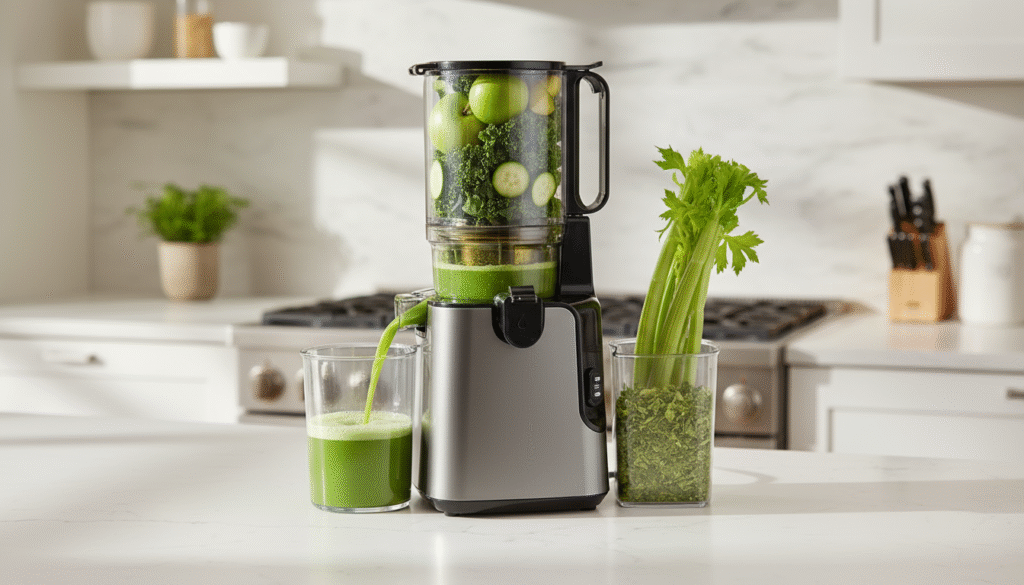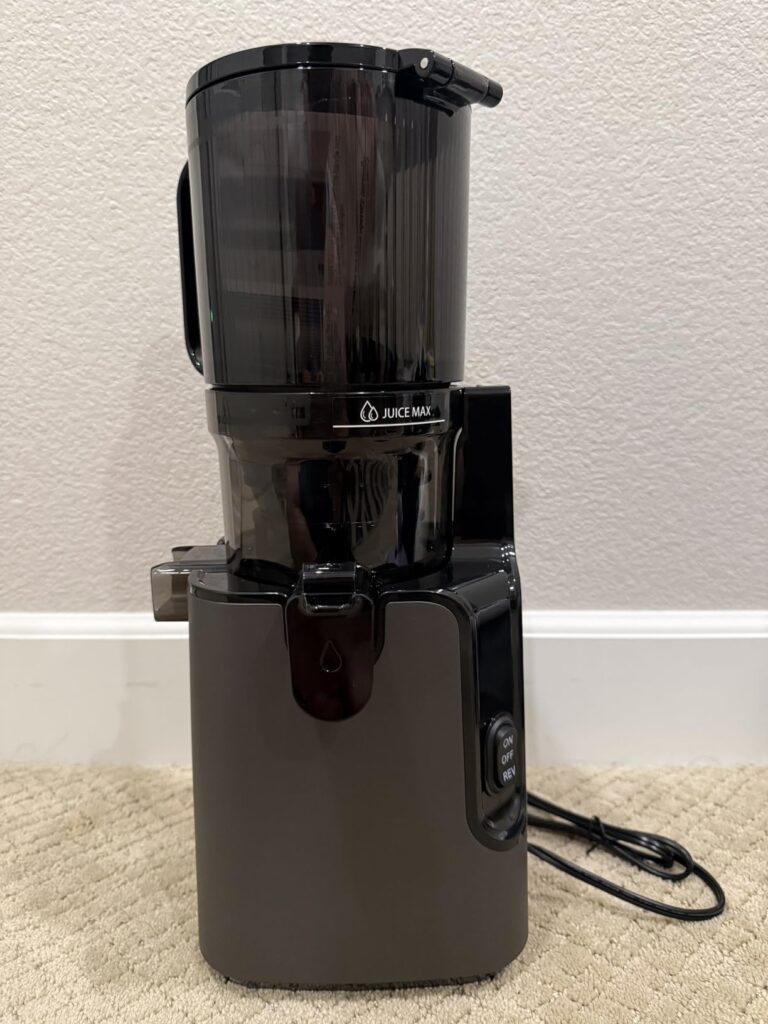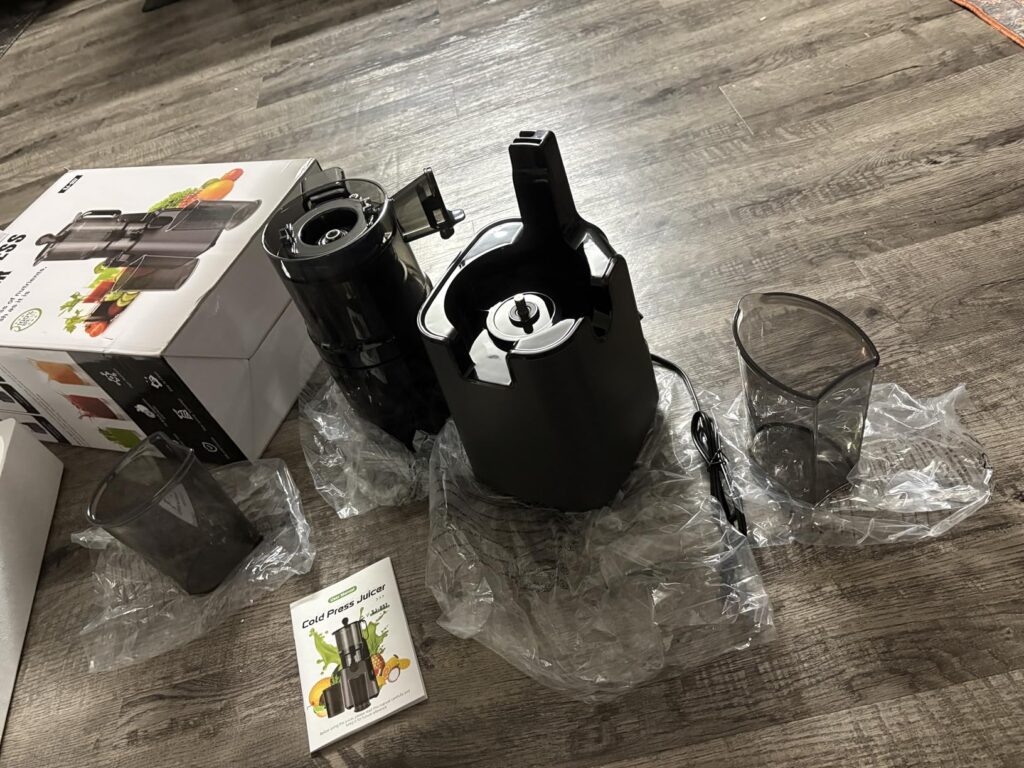How I Stopped Throwing Away $12 Every Morning (And Found the Best Juicer Machine Instead)
Listen, I’m not proud of this. But last year, I calculated that I was spending $360 every single month on juice bar drinks. That’s over $4,000 a year on liquid vegetables.
The turning point? When my friend showed me her phone calculator with the same depressing numbers. We both realized we needed to buy the best juicer machine and stop funding overpriced smoothie shops.
But here’s where it got tricky. I had no idea where to start. Cold press? Centrifugal? Masticating? (That word still sounds weird to me.) I spent three weeks reading Amazon reviews, watching YouTube videos at 2 AM, and even asking complete strangers on Reddit what juicer they’d recommend.
After testing multiple models and making plenty of mistakes along the way, I finally found a juicer machine that actually works—and doesn’t cost $600 like the fancy ones everyone raves about.
If you’re here because you’re tired of expensive juice bars or you just want fresh, nutrient-rich juice at home, keep reading. I’m going to share everything I learned, including which best juicer machine I bought, why I chose it, and whether it’s actually worth the hype.
What Is the Best Juicer Machine? (And Why It Actually Matters for Your Health)
A juicer machine extracts liquid from fruits and vegetables while separating out the fiber (pulp). Sounds simple, right? But here’s what nobody tells you: not all juicers work the same way—and that makes a huge difference in nutrition.
There are two main types of juicer machines:
Cold Press Juicers (Masticating Juicers):
These use a slow-rotating auger (around 50 RPM) that crushes and presses produce. Because they operate slowly, they generate almost zero heat. This means they preserve up to 50% more vitamins, enzymes, and antioxidants compared to fast juicers.
Think of it like squeezing an orange by hand versus throwing it in a blender. The gentler method keeps more of the good stuff intact.
Centrifugal Juicers (Fast Juicers):
These use high-speed spinning blades (up to 27,000 RPM) to shred produce and separate juice from pulp. They’re ridiculously fast—like, 10 seconds fast—but the high speed creates heat and oxidation, which destroys nutrients.
When I first started researching the best juicer machine, I thought speed was everything. Who wants to wait around for juice? But then I discovered that slower juicing = better nutrition. That completely changed my mind.
Now I understand why serious health enthusiasts always recommend cold press over centrifugal.
Why I Chose This Best Juicer Machine Over the $600 Nama Everyone Talks About
I almost bought the Nama J2. Seriously, I had it in my cart and everything.
Everyone on Reddit and YouTube was calling it the best juicer machine on the market. And honestly? They weren’t lying. The Nama J2 is phenomenal—self-feeding hopper, ultra-quiet operation, 15-year warranty, and it produces dry pulp with crazy-high juice yield.
But here’s the problem: it costs $599.
As much as I wanted the Nama J2, I couldn’t justify spending six hundred dollars on my first juicer machine. What if I didn’t stick with juicing? What if it ended up collecting dust like that bread maker I bought in 2022?
So I started hunting for alternatives. That’s when I found the YPONE Cold Press Juicer on Amazon. It had over 1,400+ customer reviews with a solid 4.5-star rating, and it was on sale for just $139.99 (originally $179.99).
At first, I was skeptical. Could a $140 juicer machine really compete with premium models? But people in the reviews kept saying things like “budget Nama alternative” and “best value cold press juicer.”
The features caught my attention too:
- 5.4-inch large feed chute (fits whole apples!)
- 50 RPM cold press technology (preserves nutrients)
- 99% juice yield (almost no waste)
- Easy 3-part cleaning (no 20-minute scrubbing sessions)
- Quiet operation (~55-60 dB, similar to normal conversation)
For that price, I figured it was worth trying. So I clicked “Add to Cart” and waited nervously for it to arrive.
My First Week Using This Juicer Machine: What Actually Happened
When the YPONE juicer machine showed up at my door, I wasn’t expecting much. I’ve been burned by “budget” kitchen appliances before (looking at you, cheap blender that died after two months).
But when I opened the box, I was genuinely surprised. The titanium gray finish looked sleek—way better than the cheap plastic I was expecting. The motor felt solid and heavy, which gave me confidence it wouldn’t break after a week.
Assembly took about 2 minutes, and I didn’t even need the instructions. You just align the juicing parts, lock the lid, and plug it in.
First Juice Test:
I decided to make my usual juice bar order: apples, carrots, celery, and a bit of ginger. Classic green juice.
I tossed a whole apple into the 5.4-inch feed chute—no chopping required. Then added carrots (cut in half), celery, and ginger. Turned it on and… wow. It was so much quieter than I expected.
My friend’s Breville centrifugal juicer sounds like a jet engine (measured at 81 dB). This YPONE cold press juicer hummed along at around 55-60 dB—about the level of a normal conversation.
The juice came out smooth, vibrant green, and thick. The leftover pulp? Almost completely dry, which meant the juicer machine was extracting every possible drop.
I poured myself a glass and took a sip.
Holy crap. It tasted fresh. Really fresh. Better than the $12 juice I used to buy.
That’s when I knew this best juicer machine was a keeper.
Best Juicer Machine Features That Actually Matter (Based on Real Use)
After using the YPONE juicer machine every single day for over a month, here are the features that genuinely make a difference:
1. Extra-Large 5.4″ Feed Chute
This was a total game-changer. I could fit whole apples, cucumbers, and even medium carrots without spending 10 minutes chopping. It saved me so much time in the morning.
2. 50 RPM Cold Press Technology
The slow auger rotates at just 50 RPM, which prevents heat buildup and oxidation. This means my juice retains more vitamins, minerals, and enzymes compared to high-speed centrifugal models.
3. 99% Juice Yield
The double-layer precision mesh filter extracts almost every drop. When I checked the leftover pulp, it was bone-dry—meaning I wasn’t wasting any produce.
4. Super Easy to Clean
Only 3 main parts to wash: the auger, mesh filter, and juice cup. I just rinsed them under warm water and used the included brush on the filter. Total cleaning time? About 5 minutes.
5. Overheat Protection System
The motor has vents on both sides to prevent overheating during long juicing sessions. This feature significantly increases the machine’s lifespan.
6. Quiet Operation (55-60 dB)
I could juice at 6 AM without waking up my roommate. Compare that to centrifugal juicers that hit 75-85 dB (basically vacuum cleaner loud).
7. 400W Powerful Motor
Even though it’s slow, the 400W motor handles tough produce like beets, carrots, and even frozen fruits without struggling.
Honest Pros and Cons of This Best Juicer Machine
PROS:
✅ Affordable price: At $139.99, it’s a fraction of the cost of the Nama J2 ($599) or Hurom H320 ($509)
✅ High juice yield: Extracts maximum juice with almost dry pulp
✅ Quiet operation: Around 55-60 dB (normal conversation level)
✅ Easy to clean: Simple 3-part design—no complicated disassembly
✅ Wide feed chute: 5.4 inches means minimal prep work
✅ Preserves nutrients: Cold press technology keeps vitamins intact
✅ Handles leafy greens: Works well with kale, spinach, and celery
CONS:
❌ Slower than centrifugal: Takes 5-7 minutes vs. 10 seconds for fast juicers
❌ Plastic construction: Not as premium as stainless steel models
❌ Limited warranty: Doesn’t offer the 15-year warranty like Nama or Hurom
❌ No extra attachments: Doesn’t include citrus press or sorbet strainers
Best Juicer Machine Comparison: How Does It Stack Up Against Competitors?
I spent hours researching and comparing the top juicer machines in 2025. Here’s how they compare:
Cold Press vs. Centrifugal: Which Best Juicer Machine Type Should You Choose?
This is probably the most important decision you’ll make when buying a juicer machine.
Bottom Line:
If you want maximum nutrients, quieter operation, and better juice yield, choose a cold press (masticating) juicer machine. If you prioritize speed and convenience over nutrition, a centrifugal might work.
For me, the cold press was the clear winner—especially at this price point.
Who Should Buy This Best Juicer Machine? (And Who Shouldn’t)
This YPONE Cold Press Juicer Machine is perfect if you:
✅ Want to start juicing without spending $500+
✅ Value nutrition over speed (preserves vitamins and enzymes)
✅ Live in an apartment or have roommates (quiet operation)
✅ Juice a variety of produce (handles leafy greens to hard carrots)
✅ Don’t want to spend 20 minutes cleaning (simple 3-part design)
It’s NOT for you if:
❌ You need to make large batches quickly (the Nama J2 is better for that)
❌ You want premium all-stainless-steel construction (consider Hurom H320)
❌ You want a 15-year warranty (Nama and Hurom offer this)
3 Most-Asked Questions About the Best Juicer Machine
1. Is a cold press juicer really better than a regular juicer?
Yes. Cold press (masticating) juicers preserve up to 50% more nutrients because they operate at low speeds (50 RPM) without generating heat. Centrifugal juicers spin at high speeds (up to 27,000 RPM), creating heat that destroys vitamins and enzymes through oxidation.
2. What’s the best juicer machine for leafy greens like kale and spinach?
Cold press masticating juicers work best for leafy greens. The Hurom H320 and Nama J2 excel at extracting juice from kale, spinach, and wheatgrass. Centrifugal juicers struggle with leafy greens—they often just blow them back up the chute.
3. How loud is a juicer machine?
Cold press juicers are much quieter (43-65 dB)—about the level of a normal conversation. You can use them in the morning without waking anyone up. Centrifugal juicers are significantly louder (75-85 dB), similar to a blender or vacuum cleaner.
Final Verdict: Is This Really the Best Juicer Machine for 2025?
After 30+ days of daily use, I can honestly say the YPONE Cold Press Juicer is one of the best juicer machines you can buy if you’re on a budget. It’s not perfect—no juicer is—but for $139.99, it delivers incredible value.
It produces high-quality juice with minimal pulp, operates quietly enough for early mornings, and cleans up in under 5 minutes. The 5.4-inch feed chute saves tons of prep time, and the 50 RPM cold press technology preserves way more nutrients than centrifugal models.
Is it as good as the $599 Nama J2? No. But it’s 80% as good for less than a quarter of the price.
If you’re just getting started with juicing or don’t want to drop $500+, this is the best juicer machine I’d recommend. It’s affordable, effective, and makes really damn good juice.
Ready to ditch overpriced juice bars? Check out the YPONE Cold Press Juicer on Amazon and see if it’s the right fit for your kitchen. Your mornings (and your wallet) will thank you.




